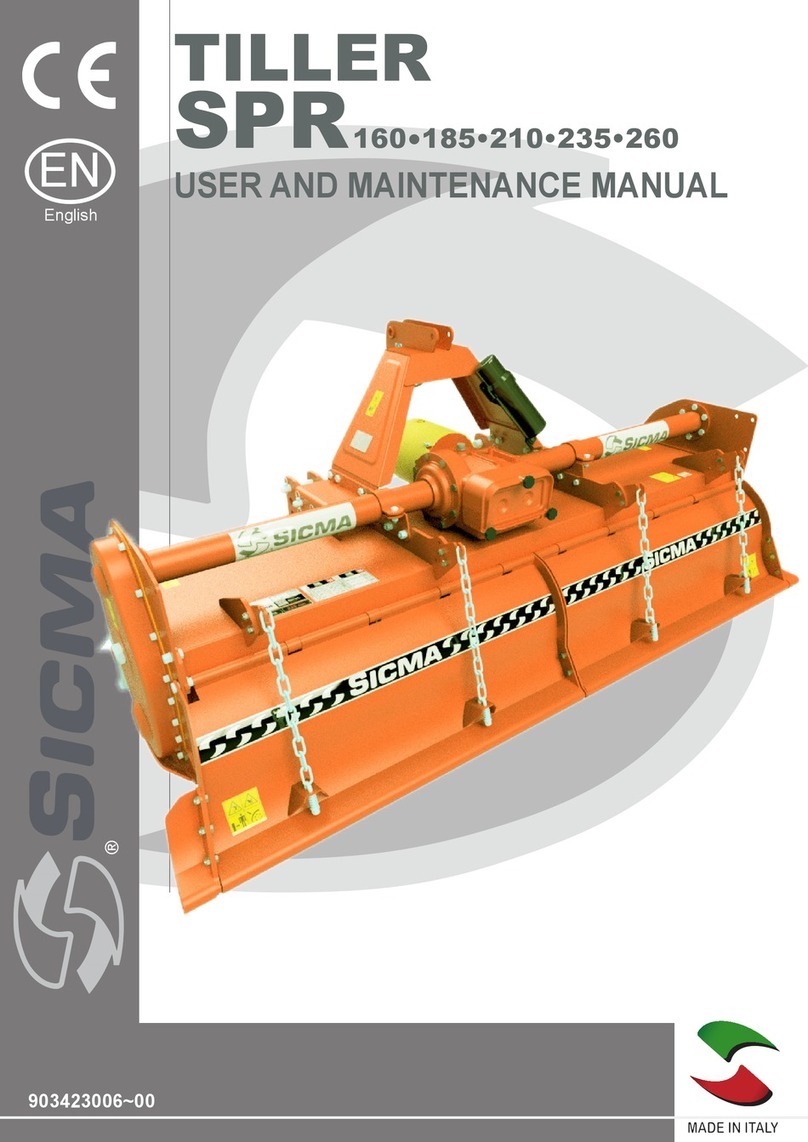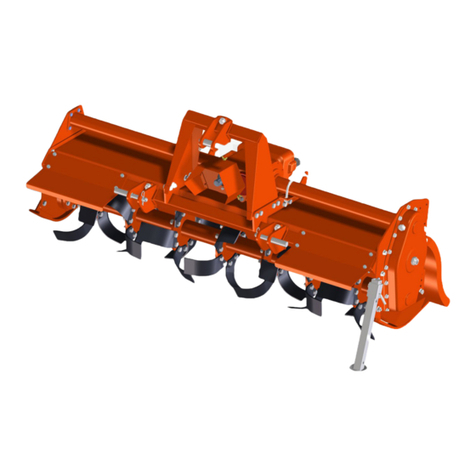
Sicma S.p.A.
Miglianico (CH)
page 7
Technical data
Model Working
width (cm)
Horse-
power
(CV)
weight
(Kg)
Working
depth Speed gear
Driveline Blades
(No) Blade type
cm inc chain gear 4 6 curved “L”
shaped
SA
85 85 10-10 106 15 6 x x x
105 105 10-10 118 15 6 x x x
125 125 10-10 130 15 6 x x x
ZL-L
90 90 20-35 126 18 7 x x x x
100 100 20-35 130 18 7 x x x x
110 110 20-35 136 18 7 x x x x
120 120 20-35 152 18 7 x x x x
130 130 20-35 158 18 7 x x x x
140 140 20-35 166 18 7 x x x x
150 150 20-35 190 18 7 x x x x
SB
110 110 20-35 165 18 7 x x x x
120 120 20-35 170 18 7 x x x x
130 130 20-35 175 18 7 x x x x
140 140 20-35 180 18 7 x x x x x
CS
105 105 30-50 220 18 7 x x x x x x
125 125 30-50 230 18 7 x x x x x x
135 135 30-50 238 18 7 x x x x x x
145 145 30-50 246 18 7 x x x x x x
165 165 30-50 266 18 7 x x x x x x
185 185 30-50 290 18 7 x x x x x x
SF
125 125 20-50 200 18 7 x x x x x
145 145 20-50 284 18 7 x x x x x
165 165 20-50 294 18 7 x x x x x
185 185 20-50 350 18 7 x x x x x
ST
120 120 30-60 312 20 8 x x x x x x
130 130 30-60 340 20 8 x x x x x x
145 145 30-60 358 20 8 x x x x x x
155 155 30-60 380 20 8 x x x x x x
180 180 30-60 394 20 8 x x x x x x
205 205 30-60 400 20 8 x x x x x x
SD
130 130 30-60 290 22 8 x x x x x
140 140 30-60 300 22 8 x x x x x
155 155 30-60 320 22 8 x x x x x
180 180 30-60 360 22 8 x x x x x
HLV
HLF
125 125 15-40 295 18 7 x x x x
145 145 15-40 315 18 7 x x x x
165 165 15-40 335 19 7 x x x x





























